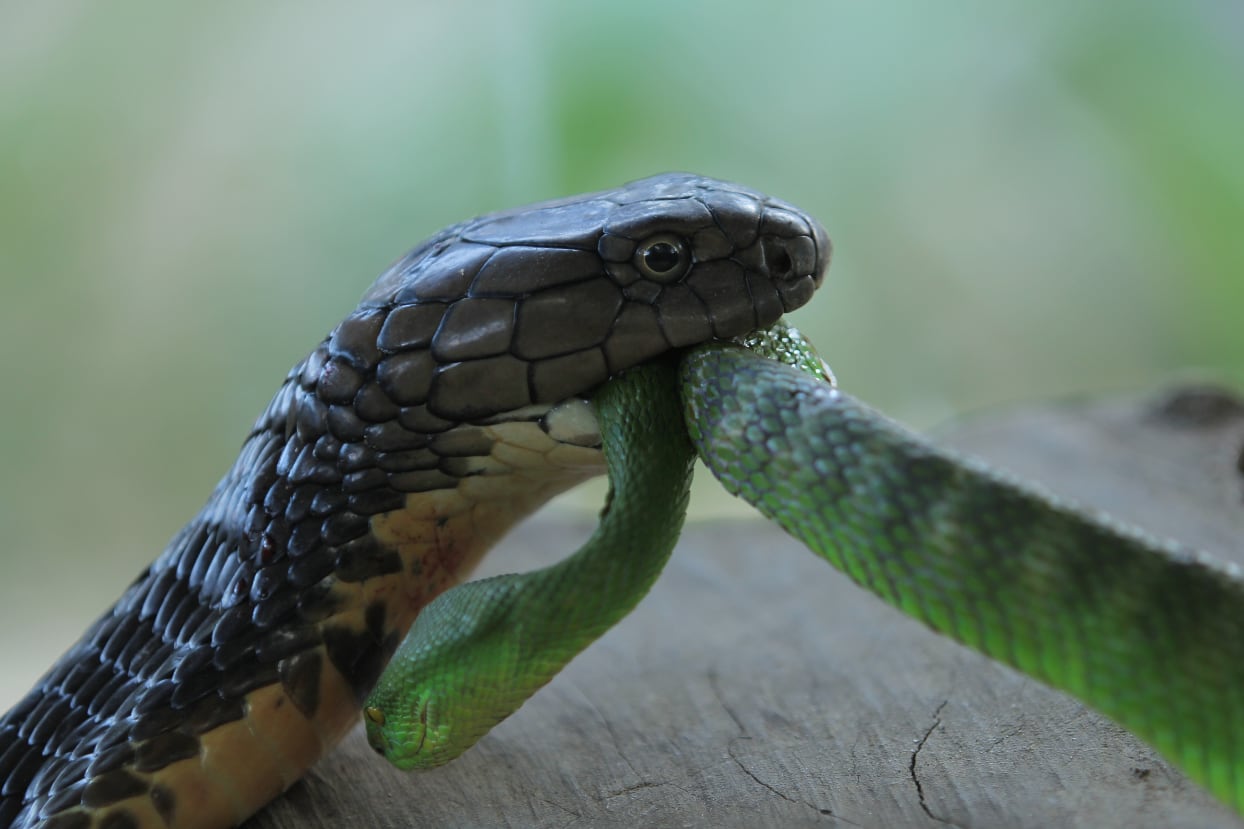Climate change is described as a looming threat to reptiles, as the changes reduce thermally viable windows for foraging, among other things.
A study published in the journal Nature assessing reptiles on a global scale says that 21 percent of all reptile species, including iconic species such as the king cobra and the Galapagos marine iguana (Amblyrhynchus cristatus) are threatened.
The researchers found that the threatened reptiles are located in regions where other tetrapods are threatened, including southeastern Asia, West Africa, northern Madagascar, the northern Andes and the Caribbean, the Kalahari, Karoo and Sahara deserts of Africa; northern Eurasia; and the Rocky Mountains and northern North America.
More Than Half The World’s Amphibians In Danger Of Extinction, Study Says
Zoological Society of London Releases EDGE Reptiles List Of Endangered Species
The king cobra (Ophiophagus hannah), which has a wide range in Asia and is the world’s largest venomous snake, is “very close to extinction”, Neil Cox of the Biodiversity Assessment Unit, IUCN-Conservation International, Washington, DC, USA said at a press conference detailing the research.
“It’s a real iconic species in Asia and it’s such a shame that even widespread species such as this are really suffering and in decline,” Cox said. Cox attributes the decline in the king cobra to logging and deforestation and attacks on the iconic snake by humans.
Factors that are contributing to the decline of other reptile species include habitat destruction due to agricultural expansion, logging and urban development, invasive species, hunting and commercial harvest and trade. Crocodiles and turtles are the reptiles most negatively affected by hunting and less by agriculture. Squamates (lizards, snakes, and amphisbaenians) on the other hand are threatened mostly by agriculture, according to the study.
Climate change is described as a looming threat to reptiles, as the changes reduce thermally viable windows for foraging, skewing offspring sex ratios in species that are dependent of temperature to determine sex.
Disease is documented as a threat to 11 reptile species, though a disease such as snake fungal disease (Ophidiomyces ophiodiicola) is a potential threat but is only primarily studied in North America, where the disease has decimated certain wild snake species. The trade of reptiles for food consumption and trade threatens 329 reptile species, including 30.8 percent of all turtle species.
The complete research paper, “A global reptile assessment highlights shared conservation needs of tetrapods” can be read on the Nature.com website.


